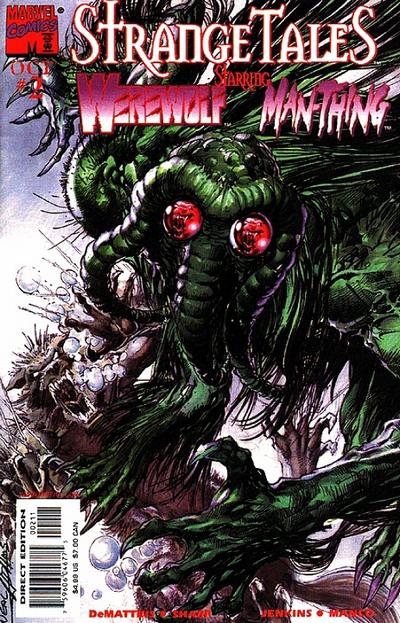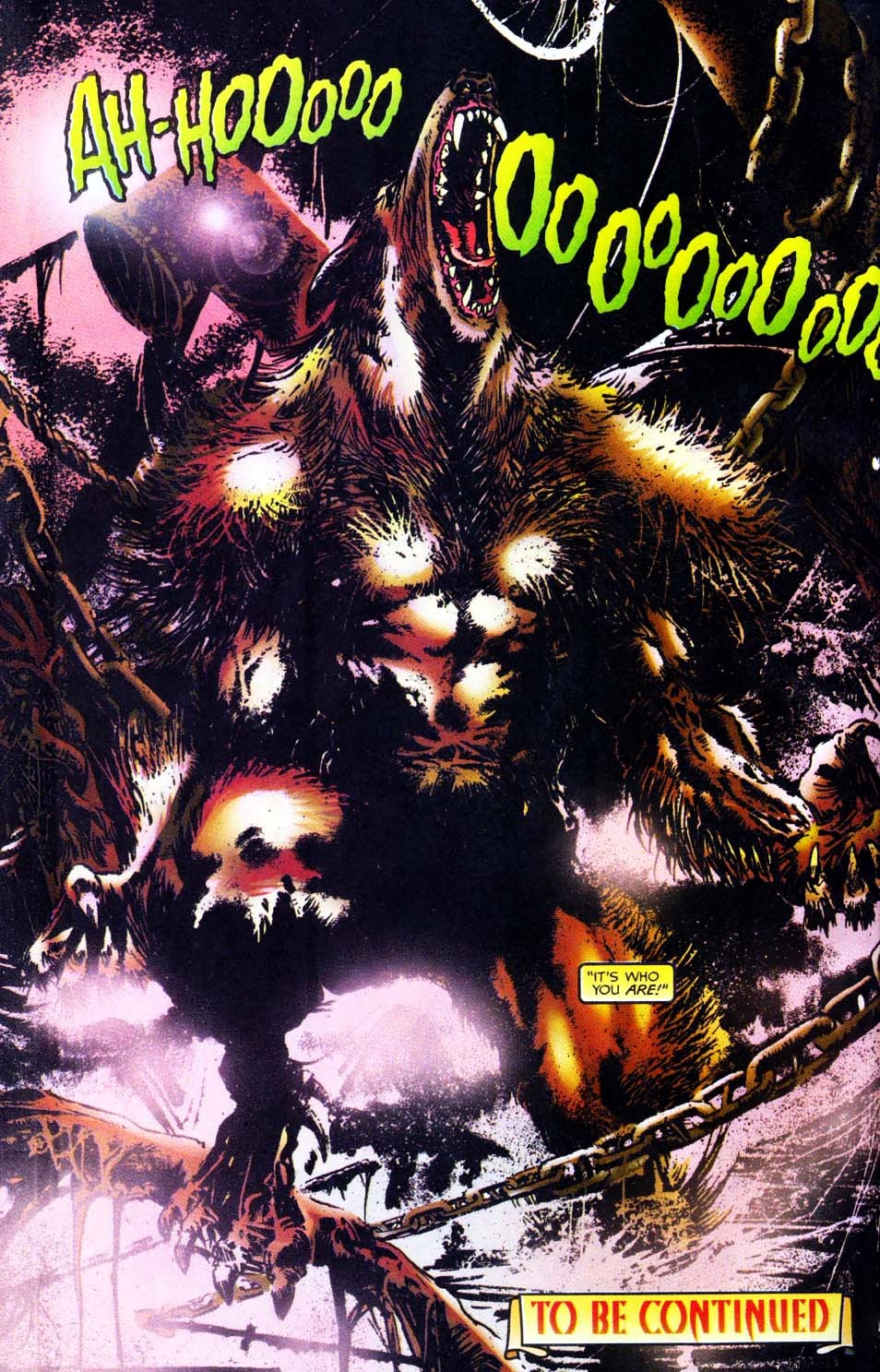
The Man-Thing half of this book continues the story from the big, sprawling story from the 1998 volume of Man-Thing, but the series is abruptly cancelled at #2 so we never get to see what DeMatteis and Sharp really intended to do.
What we do see is Man-Thing and a female companion shunted through space on a quest to repair the Nexus of All Realities, which was shattered. They up with Silver Surfer. In order to repair the Nexus, Man-Thing must take back a fragment of the Nexus around which an entire civilization has developed. This puts them into conflict with Surfer, who, true to his nature, has taken a protective role for this society.
There’s an intertwining storyline with Mister Termineus that is truly creepy, and at the end of issue #2 Man-Thing’s mission and Termineus’ evil start to intersect–with Devil-Slayer and Sorrow appearing to try to rebalance the realities.
But of course, no issue #3. It’s hard to read or rate a story that’s so complicated and obscure, and which doesn’t get an ending. The art is really good though.

The Werewolf half also continues a story from an aborted 1998 series. The story itself is not as complex as the Man-Thing tale. It’s got Jack Russell not wanting to kill when he tranforms, being falsely accused, etc. You’ve seen it before, but it’s well done and has the added layer of a new vampire coven (introduced in the 1998 Werewolf by Night book).
Both books also have a short third story. In issue #1, it involves Simon Garth the Zombie, who is always fun. And both books have very mature art that’s quite different from everything else Marvel put out in 1998. That may be why this series failed–and may be the reason for the failure of the entire “Strange Tales” imprint launch (which also included, among other things, a Blade comic). And also for the relative success of Marvel Knights, which generally (with exceptions) just upped the level of violence and more mature writing, without changing the genre tropes of superbooks.
